Youth Lead Efforts to Reduce Gender-Based Violence in Their Communities
Published on January 8, 2025
By MOMENTUM Integrated Health Resilience core and country staff
Globally, some 30 percent of women aged 15 or older have experienced some form of physical or sexual violence.1 MOMENTUM Integrated Health Resilience works in partner countries experiencing some of the world’s highest rates of gender-based violence (GBV). In most of these countries, young people represent a high proportion of the overall population. In this story, then, we will look at youth leaders from four countries and how MOMENTUM programming engages them and their peers in GBV prevention.
Brigitte Useni, Democratic Republic of the Congo
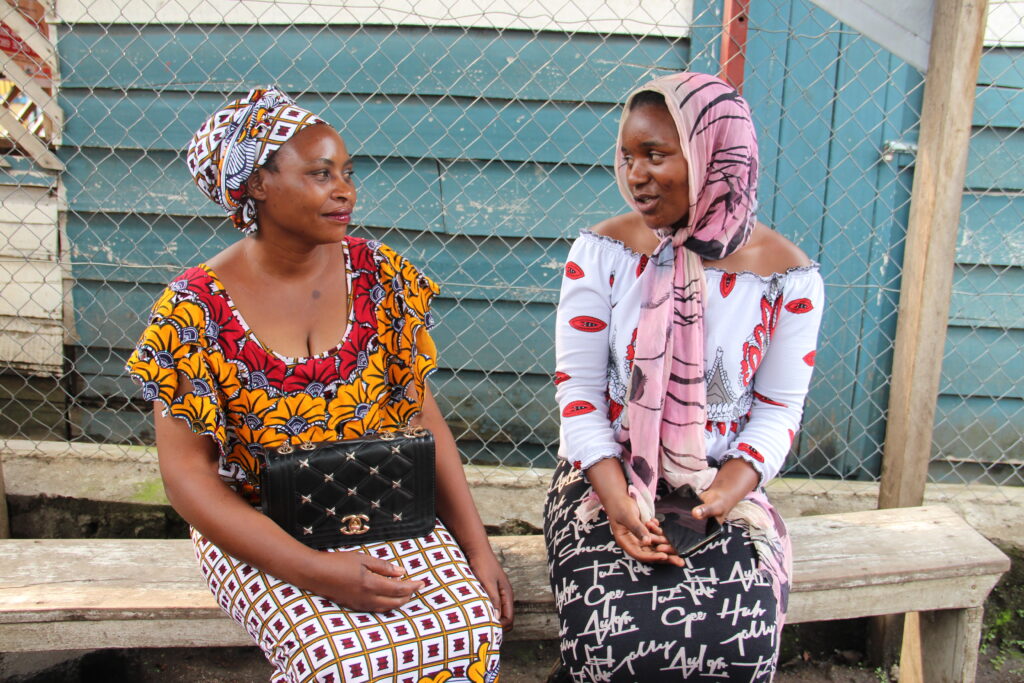
In April 2022, MOMENTUM partnered with the Democratic Republic of the Congo’s (DRC’s) National Program for Adolescent Health to assess sexual and reproductive health in the country’s volatile North Kivu Province. The study highlighted issues such as low access to sexual and reproductive health services among adolescents and young adults, and high rates of pregnancy among youth. These are issues that are often connected with GBV and related forms of coercion and violence.
In response, MOMENTUM, with the support of relevant government health entities, set up 18 youth clubs where 780 adolescents and young adults gathered with peers in a safe space to discuss their reproductive health needs. In addition, with the support of government youth health experts, 39 youth and 11 local health officials were trained on youth sexual and reproductive health topics, enabling them to moderate peer education sessions and present action plans to help local youth groups address GBV and other health needs.
Two years ago, 22-year-old student Brigitte Useni went through the sessions and decided to help get messages out to her peers about how to recognize and respond to GBV, and address negative gender attitudes that can lead to becoming a perpetrator or victim of violence.
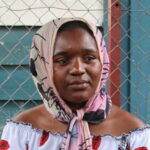
“During the sessions, we spoke about aspects of GBV, and afterward we conducted mass awareness-raising in the community, and in focus groups with specific groups [such as people living with disabilities],” said Brigitte. “We were also taught how to identify and refer suspected GBV cases [to the relevant authorities or nearest health facility].”
Brigitte’s enthusiasm caught the attention of officials at the Munigi Health Center, who asked her to be a peer educator and facilitate twice-weekly youth club meetings, as a way to improve reporting and timely management of suspected GBV cases among youth.
“Now, as a peer educator, I share messages related to GBV prevention and management,” Brigitte continued. “In terms of prevention, I tell youth they need to have good awareness of [the dynamics of] girl-boy relationships to reduce GBV risks.”
Brigitte is optimistic for the future, and thinks the local efforts are having results: “With awareness-raising in the community and in focus groups, and with training in youth clubs, I think that we are on the right track.”
Oumamatou Toure, Mali
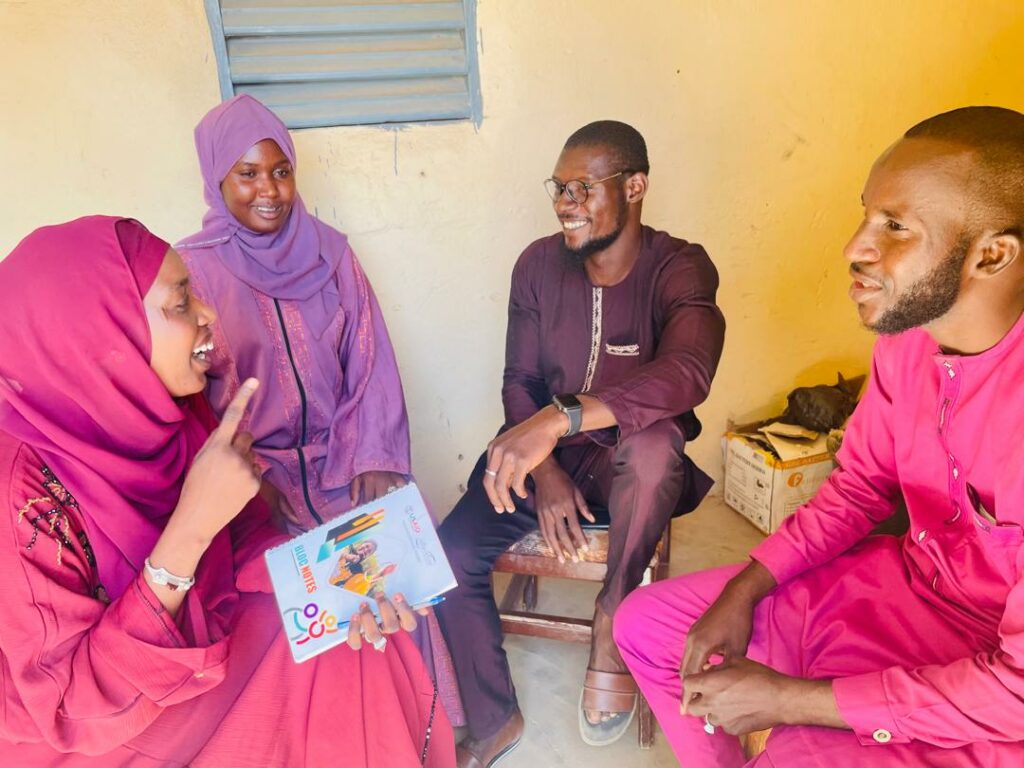
According to the 2018 Mali Demographic and Health Survey, over half of women aged 25 to 49 are in a union before age 18. Among women aged 15 to 49 who have ever been married, 39 percent have suffered physical and/or sexual spousal violence; of these, 68 percent have never sought help and have never spoken to anyone about it. In addition, 89 percent of all women in this age group are circumcised, a practice that is widespread throughout the nation.2
MOMENTUM works with local nongovernmental organization (NGO) partners in the Gao and Timbuktu regions, where certain social taboos and religious beliefs are not conducive to protecting the rights of women and girls. These local organizations promote women’s rights by organizing conferences in schools, holding awareness campaigns and educational talks on GBV and its prevention, conducting intergenerational dialogues, and coordinating outreach to community leaders.
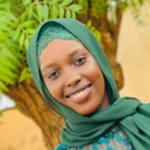
Oumamatou Toure, 26, works for local NGO GRIDev in Gao. Earlier this year, she received training that provided a solid grounding in issues surrounding GBV: “I learned about protecting GBV victims and witnesses who file complaints; about sexual harassment in the workplace and educational institutions; and about institutional violence, that is, the norms, customs, and religious and traditional practices that infringe on the freedom of women, in particular forced or child marriage.”
Now Oumamatou organizes community talks and discussions with youth, teens, and adults to raise awareness of the issues. She also outlined her hopes for the future: “I would like to see resilient young leaders capable of preventing and denouncing GBV,” she asserts. “But it will also be important to empower women and youth through income-generating opportunities.”
Sabiou Yahaya, Niger
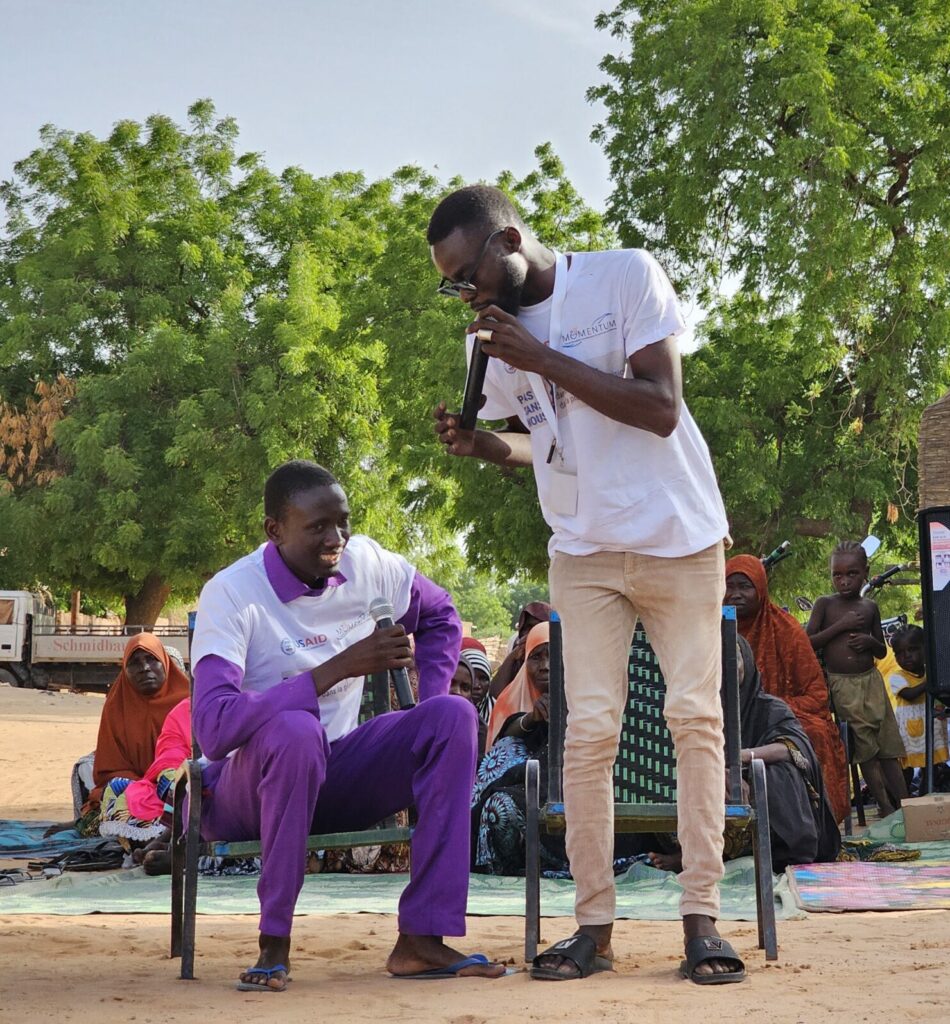
Niger ranks 45th out of 52 African countries on the African Development Bank’s Africa Gender Equality Index3 and has the highest rate of child marriage in the world. A 2022 study on GBV prevalence estimated that 38 percent of women have experienced GBV in their lifetime,4 which is exacerbated by the country’s multifaceted humanitarian crises and by entrenched social norms that hinder gender equality. To address this, MOMENTUM engages young people through three approaches:
The First-Time Parent program, running since 2021, involves 200 community health workers and reaches more than 3,000 young couples in 100 villages in the Dosso and Tahoua regions. Couples receive counseling and participate in discussions about relationships and families.
Second, youth community action teams (YCATs) comprising 24 females and 32 males aged 15 to 24 design and conduct local research on problems that they themselves identify as impacting their lives and health, such as GBV.
And third, the CoupleConnect approach brings together 48 young couples in mixed-gender groups to strengthen couple connectivity, with an objective of improving their health resilience and reducing conflict and GBV.
These activities involve training health staff, youth, young couples, mothers-in-law, community health workers, and community leaders. Those trained, in turn, raise awareness among community members to promote behavior change against GBV through community outreach, small group discussions, awareness sessions, and home visits.
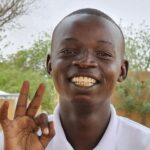
Sabiou Yahaya, 22, is a student and YCAT member in Dosso whose initial training provided him knowledge on the types of GBV, the rights of survivors, and the local government’s GBV referral and management system. His YCAT research provided further insights into youth-related issues and how youth can effectively respond. Sabiou found that women are more likely to use voluntary family planning/reproductive health and GBV services than men, but use of these services is linked to demographic characteristics, socioeconomic status, and cultural/societal considerations.
“Based on the research findings, inclusive and transformative action plans were designed by the young people,” said Sabiou. “These include regular awareness-raising activities on GBV for our peers and within the community. My hope is to see our community free of violence, where young people’s views are valued, and where young people are fairly represented in any decision making that concerns them. Our work with MOMENTUM leads us to believe that it is possible to engage youth.”
The youth efforts are helping to generate awareness and buy-in locally. “The youth awareness campaigns inform community members about violence, create awareness, and promote respectful and non-violent behaviors and attitudes towards women and girls,” said local chief Manirou Magagi. “The fight against violence is an ongoing process that requires a long-term commitment.”
John Alu Michael, South Sudan

When a MOMENTUM local partner, The Rescue Initiative-South Sudan, visited his community to discuss planned youth activities related to community discussions and dialogue, John Alu Michael, 26, attended and decided to participate in the planned community engagement.
“I got involved because the program activities made very much sense to me, especially the gender-based community dialogues,” John recalled. “The discussions were so engaging that the facilitators ended up spending many more hours on that than planned.” These community discussions have now reached over 3,000 youth aged 15 to 35.
John went on to participate in other discussions with his peers about how youth can be involved in preventing violence against women. And he took his discussions even further.
“I was part of discussions with two youth gangs in our area [on the outskirts of South Sudan’s capital, Juba],” explained John. “As a result, they decided to shun gender-based violence. The most important thing I learned through these sessions is problem solving through dialogue.”
South Sudan’s challenges remain significant. “The behavior change activities are doing a lot, but there is no place for youth to acquire needed job skills,” John said. “But youth can be resourceful if engaged and made aware of their role in the country’s development.”

Despite the challenges, John noted that his community has seen a drop in reported cases of partner violence since the community dialogues started. He sits on a local administrative council, which used to receive five or six reports a month, but now there are some months when no cases are reported.
Although significant challenges remain, engaging youth in GBV prevention is providing positive results in some of the world’s most challenging contexts.
References
- UN Women. (n.d.). Facts and figures: Ending violence against women. https://unwomen.org/en/what-we-do/ending-violence-against-women/facts-and-figures
- Institut National de la Statistique, & ICF. (2019). 2018 Mali Demographic and Health Survey key findings. https://dhsprogram.com/pubs/pdf/SR261/SR261.E.pdf
- African Development Bank Group. (2015). Africa Gender Equality Index 2015. https://www.afdb.org/fileadmin/uploads/afdb/Documents/Publications/African_Gender_Equality_Index_2015-EN.pdf
- Greenhalgh-Stammer, E., et al. (2022). USAID/Niger gender analysis report. Banyan Global. https://banyanglobal.com/wp-content/uploads/2017/04/USAID_Niger-Gender-Analysis-Report-Public.pdf.

